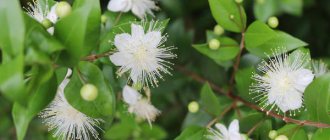Orchids have firmly entered our lives. The stores sell a varied assortment of these beauties to suit every taste and budget. Every florist tries to get his hands on an overseas whim, most often more than one specimen. Some get so carried away that they become professional orchimaniacs. They collect different varieties, propagate them and save dying plants, which are sold at a discount. From the article you will learn about orchids in winter: how to care for the flower, how to water it and what conditions to create for healthy growth.
What hybrids to grow 2. How often to water an orchid in winter 3. Humidity in the room 4. What should be the lighting 5. Temperature in winter 6. Ventilate the room 7. How to feed the plants 8. Is it possible to replant an orchid in winter
Photo: Every florist tries to get his hands on an overseas whim.
Orchid hybrids for the home
There are a large number of varieties of orchids. Every year, breeders develop new varieties with a more sophisticated flower shape and aroma. The orchid is a rather capricious flower. In order for it to bloom profusely and please the eye for many years, you need to learn how to properly care for it.
Phalaenopsis hybrids are most often sold in stores. These hybrids do not require particularly complex care and are suitable for both a novice gardener and a person who is not interested in growing flowers due to lack of time.
Phalaenopsis hybrids require approximately the same conditions of maintenance and care throughout the year.
Below we will talk about caring for hybrid varieties of orchids, which were bred in special greenhouses and intended for home growing. Natural species require slightly different conditions for successful wintering. And in everyday life they are found less often - only among avid collectors.
Photo: Phalaenopsis hybrids are most often sold in stores.
Particular attention should be paid to the winter period in her life, because caring for an orchid at home in winter at this time of year is significantly different from caring for it in the warm period. This is what we will talk about in this article.
Types of hybrid orchids intended for growing at home
Phalaenopsis - butterfly orchid
One of the most common orchids in our homes. A huge number of shades of flowers have been developed. Easy to care and maintain. It is best to place a flower pot on southern or western windows.
Photo: Phalaenopsis - butterfly orchid.
Dendrobium
A beautiful, fragrant plant, which is also easy to buy in any store in our country. The most common are Dendrobium nobile and Dendrobium phalaenopsis. They are similar in appearance, but require different care.
Photo: Dendrobium.
Wanda
Among gardeners, this orchid is considered the most beautiful. Very bright appearance. Grows with a bare root system. Also not a rare guest in the collections of Orhimans.
Photo: Wanda.
Cattleya
It has large, showy, fragrant flowers. The flowers come in a variety of shades - from white to purple. Quite a whimsical plant to which you need to find an approach.
Photo: Cattleya.
Paphioledilum - Lady's slipper
It is not fussy and can grow on any windowsill. A beautiful flower with a variety of colors.
Photo: Paphioledilum - Lady's slipper.
With the onset of cold weather, many varieties of orchids go into hibernation. Their growth slows down, flowering and root development stop.
The following varieties of orchids behave this way: Calantha, Tunia, Pleione, several species of Dendrobium and Cattleya.
Cattleya stops growing in winter and needs only humidified air.
How to transport a flower?
In order for the flower to tolerate this procedure normally, you need to know some nuances.:
If an orchid needs to be transported and the temperature drops to 0 degrees, it is wrapped in a double layer of paper, making something like a bag. At -5 degrees, you will need not only paper, but also polyethylene. If the frost outside is about -10, then an additional underlay for the laminate is used. The orchid is wrapped in auxiliary means and fixed with a stapler.- In severe frosts, the plant is wrapped in synthetic padding and packed in a plastic bag. Thanks to multilayer packaging, a thermos effect is created.
- Once the orchid is indoors, under no circumstances should it be opened immediately - this will be a shock to the flower. To get used to the new temperatures, the orchid is left alone for 30 minutes.
Important! The flower is a heat-loving plant, so you should not stay in the cold for a long time.
We offer a visual video on how to prepare an orchid for transportation in the cold season:
How to water an orchid in winter
Proper watering of orchids in winter is perhaps the most important condition in caring for an orchid.
At the beginning of winter, we begin to gradually reduce the frequency of watering and the volume of water. As a rule, plant growth slows down in winter, even in those varieties that do not have a pronounced dormant period. The previous volume of water simply will not be absorbed by the roots. With excess moisture, unpleasant putrefactive processes and even the death of the plant can begin.
In winter, we water once every one and a half to 2 weeks.
Water for irrigation should be settled and at room temperature. Snow water is ideal.
Photo: A transparent pot helps determine whether it’s time to water or whether it’s too early.
| Advice. To determine whether you are doing everything correctly, monitor the moisture content of the substrate and the color of the roots. The substrate should not dry out completely, but water should not accumulate in the pan. |
A transparent pot helps determine whether it’s time to water or whether it’s too early. The roots are visible through its walls, and by their color and condition it is quite easy to understand what the plant needs at the moment.
Condensation on the inside drains of the pot indicates that there is no need to water.
Healthy roots should be succulent, green in color, with patches of dark lilac shades in places. If the roots are not juicy, dry or grayish-silver in color, then you need to water the plant.
You need to water the orchid not as usual, from the top, but by immersing the pot in water for a while. During this time, the roots are saturated with moisture.
Beginner orchimaniacs often make mistakes when caring for the plant after watering. They rush and remove the plant from the water when the roots are not yet completely saturated with water. They do not allow the water to completely drain from the roots and rush to put the pot in place.
Photo: Healthy roots should be succulent and green.
Often the flower stands on the windowsill, and the temperature near the window is always lower than in the room. And so, we place such a flower near the window, it continues to actively absorb the moisture it lacks, and the water temperature is rapidly decreasing. As a result, the roots of the plant receive a dose of hypothermia. Hypothermia reduces the plant's immunity and provokes the appearance of fungal diseases and putrefactive processes.
To prevent this from happening, it is not necessary to remove the pot from the windowsill.
| Advice. It is necessary to create a layer of thermal insulation between the pot and the window sill. Lay a thick layer of polystyrene foam or other material that will absorb the cold from the windowsill. And the plant itself must be placed in a pot with additional depth into which excess water will drain. |
The plant needs such a pot all year round. Therefore, when buying an orchid, immediately purchase a special pot for orchids. With large drainage holes and a high, special bottom. This is an important point that you need to know and avoid a negative scenario.
Also, all orchids love watering through a warm shower, as they are tropical natives. But even here in winter there is a peculiarity in care.
Take a warm shower in the evening and leave the orchids in the bath overnight. There they will be well saturated with moisture and dry properly until the morning. In the bathroom, as a rule, it is always warmer than in other rooms and the humidity is always higher, especially after water procedures. There, conditions are formed that are as close as possible to the natural ones in which orchids grow in nature.
Your orchids will be very grateful to you for such care and will not keep you waiting long for luxurious flowering. After such a shower, you need to remove the accumulated excess water at the base of the plant by blotting it with a paper napkin.
Photo: Orchids love watering through a warm shower.
If your water is hard and contains a lot of calcium, then after the drops dry, unpleasant marks may appear on the leaves. To avoid this, wipe the leaves before you go to bed. No need to wipe dry, just lightly to remove large drops.
| Advice. The lower the room temperature, the less often you need to water. |
Home care
In order for the orchid not to get sick and to delight with its flowers, it needs to create conditions that are as close as possible to natural ones.
To do this, it is important to ensure proper lighting, temperature, humidity and some other indicators. Caring for orchids for beginners is not an easy process; the flower requires special attention
How to choose a pot for an orchid
For the plant to feel comfortable, the pot must have drainage holes. Excess moisture will escape through them. To make it easier to monitor the condition of the roots and substrate, experienced gardeners advise planting and growing orchids in transparent plastic pots.
Ceramic pots are not suitable for orchids - its roots grow to the walls very quickly. If transparent containers seem unsightly to you, you can place them in an additional, larger pot made of ceramic or glass
It is equally important to know how to properly care for an orchid in a pot.
Zamioculcas plant: planting and care at home
Choosing a seat in the room
The orchid does not tolerate even minor movements, so it is important to choose a permanent place for it. It should be well lit, but without access to direct sunlight, which causes burns and harms flowering
South windows are not suitable for keeping orchids. On the north side, the flower will need additional lighting. The best option would be a western or eastern window sill.
Features of proper lighting
The orchid is a tropical plant; in its homeland the daylight hours are very long. Growing orchids at home will require organizing fairly bright but diffuse lighting for 13-15 hours a day. If the plant receives enough light, it will produce buds regularly. With a lack of sunlight, it begins to turn yellow and fade.
In summer, the flower can be grown in the shade, covering it from direct sunlight with a piece of plastic or translucent film. This protection can be removed in the fall. In winter, when daylight hours are short, you can use additional lighting sources.
https://youtube.com/watch?v=tg66f7-4_QE
Temperature
All types of orchids will feel good at daytime temperatures from + 18 to +27 degrees and night temperatures from +13 to +24. However, it should be borne in mind that all types of orchids are usually divided into three groups according to sensitivity to air temperature:
- Heat-loving varieties that naturally grow in tropical forests and plains. These include dendrobiums and phalaenopsis. During the day, such flowers need a temperature of 15 to 32 degrees, and at night - from 15 to 18 degrees.
- Medium-temperature varieties are Miltonia and Odontoglossum. These plants need cooler temperatures - 18-22 degrees during the day and 12-15 degrees at night.
- Cold-loving plants include Australian dendrobiums, laelias and paphiopedilums. The optimal temperature for breeding them will be 22 degrees during the day and 12-15 at night.
How to water an orchid correctly
For an orchid, slight drying out is less dangerous than excess moisture. This should be taken into account when watering. The plant needs active hydration during rapid growth and flowering.
The quality of watering can be assessed by the appearance of the plant. If there is a lack of moisture, the leaves will wither and the bulbs will wrinkle. If there is too much water, the roots of the flower will begin to rot and the leaves will turn yellow.
Irrigation technology is also important. The orchid can be placed in a container with warm water, or it can be watered from the shower
After this, the flower pot is placed on a wire rack to drain off excess water.
Growing and caring for citrofortunella at home
Feeding and fertilizers
The plant needs feeding during the period of active growth. Fertilizers for orchids must be selected only from special types. The feeding procedure should be alternated with watering, doing them every other week. It is unacceptable to use preparations for other indoor flowers. In winter, the plant does not need additional feeding.
Air humidity
Orchids love high humidity. In winter, after turning on the heating, the air in the room becomes dry. Dry air promotes the appearance of spider mites. Our task is to create ideal air humidity around the whims in winter. To do this, you can use a humidifier, which will create favorable conditions for both us and the plants.
There are simpler options:
- Place a saucer of water near the pot
- Spray the air around the plant 2 times a day
It is not recommended to spray the leaves and flowers of orchids. Drops of moisture will accumulate near the growth point, and there is the orchid’s weak point. Excess moisture quickly provokes rotting at the base. If the process is started, you will have to say goodbye to the orchid.
Photo: Spray the air around the plant 2 times a day.
| Important. Be very attentive to this place on the orchid, especially in winter after watering and a warm shower. Always shake off moisture from the growing point and dry with extreme care. |
- You can buy transparent deep trays, pour a layer of expanded clay into them, fill them with water, lay a grate on top and place a pot with a plant on the grate. If your orchids do not have enough air humidity, the leaves begin to turn yellow and wither. The roots stop growing altogether.
- Get an indoor fountain
Watering during flowering
Depending on when the flowering period begins and how long it lasts, you need to choose the method of watering or the method by which it will be performed. When the flower has bloomed, it is necessary to change its watering regime, which will correspond to the natural nature of the flowering plant. When flowering occurs, the plant produces seeds, which are microscopic in size and also have a high level of volatility. This feature becomes the main one when choosing the method or method of irrigation to be performed.
Often it is at this stage that violations occur. Water for irrigation should be at room temperature. It is necessary to pour water directly into the root system of the orchid. You can water with clean water several times a week. However, you need to remember that watering often does not mean irrigating with plenty of water. Experienced gardeners monitor the condition of the soil several times a week. The substrate should not dry out, but it should not be allowed to become waterlogged. This method of visual control can determine the need for watering.
In addition, during the flowering stage, especially in winter, it is necessary to observe the humidity parameters in the room where the flowering plant is located. It is possible, and sometimes necessary, to spray the leaves of a plant using a conventional spray bottle. With this method of spraying, it is necessary to ensure that water does not get into the central part of the flower.
Lighting for orchids in winter
In winter, daylight hours become shorter; orchids often do not have enough natural light for normal wintering. Therefore, place pots on southern windows. And if this is not possible, take care of installing an additional light source.
From mid-October, orchids already need additional lighting. It is advisable to purchase a special phytolamp. But you can also use a regular lamp with a fluorescent bulb of about 60 watts. Light can be either warm or cold. An additional light source should be placed no further than 20–40 cm from the plant.
Photo: It is advisable to purchase a special phytolamp.
If the plant does not have enough light, it will not be able to set flower buds. With a lack of light, the leaves become stretched and acquire a dull and not very beautiful shade.
The ideal daylight hours for an orchid are from 8 am to 8 pm. Try to create such conditions, and the plant will always have a beautiful color and full of vigor.
Temperature for orchids in winter
The most optimal daytime temperature for orchids is considered to be +21… +24 degrees. At night it should drop slightly, but not below + 15 degrees. Temperature changes of 5-7 degrees are closest to natural. They stimulate the plant to lay flower buds.
Photo: Temperature changes of 5-7 degrees stimulate the plant to bud.
This is exactly what happens in my house. And now my phalaenopsis orchid stands with small buds.
Therefore, if you want your plant to bloom, do not create greenhouse conditions for it in winter. You can safely open the window at night and thereby lower the night temperature in the room. The plant will quickly respond to this and will soon bloom.
Room ventilation and drafts
All plants, like humans, need fresh air to be healthy. Do not forget to periodically ventilate the room where orchids grow. Try to keep the flower away from cold air streams and do not create drafts with winter air. Lightly freshen the air in the room, just like for yourself.
Cold air can quickly destroy the leaves of a plant. To prevent this from happening, when airing, the flower pot can be removed from the windowsill to the back of the room.
Make sure that the leaves do not touch the cold glass of the window.
Photo: Make sure that the leaves do not touch the cold glass of the window.
In severe frosts, it is best to remove the orchid from the windowsill or install a protective foam barrier around the plant.
Caring for orchids with a mild dormant period in winter
This category also includes several popular orchid species that require special care.
Cattleya
The presented specimen has two types: flowers that bloom in spring and plants that bloom only in autumn. Although many gardeners believe that this is all conditional.
Important! Under favorable conditions, the impetus for flowering can be given at any time of the year.
If the plant blooms in the fall, then it will not have a dormant state, since after flowering you can see the emergence of the next peduncle.
True, this does not mean that you need to care for the plant in the same way as in the summer. In winter, fertilizing is completely removed and watering is reduced. The flower loves bright light, so the fluorescent lamp should be turned on constantly during the daytime. This rule is also mandatory for spring specimens, which go into hibernation before and after the release of the peduncle. As for the temperature, it should be within +12..+18 °C.
Dendrobiums
The vast majority of flowers of these species delight with the beauty of blooming at the very end of winter and at the beginning of spring. During this period, it is necessary to take care of good lighting, air humidity and watering. Humidity should be high, because there is a high chance of the plant being damaged by spider mites. As for watering, it is carried out only when the substrate is completely dry.
How to feed an orchid in winter
During the dormant period, the plant is fed once a month with a special fertilizer for orchids. If this is not the case, then any universal flower fertilizer will do. We fertilize only on a damp substrate. It is best to do this after a shower or watering.
Replanting an orchid in winter
If there is no urgent need, then you should not replant the orchid in winter. At this time, all processes in the plant are dulled. Therefore, it is best to wait until spring. Except for those cases when problems began with the root collar and roots. Then you should not hesitate and act quickly.
Photo: It is not worth replanting an orchid in winter.
______________________________________________________________________________________________











